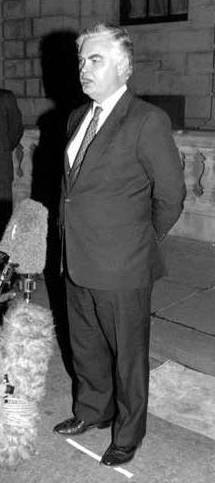Democrat July-August 2011 (Number 124)
Book review by Brian Denny
The toxic combination of
New Labour and the EU

New Labour and the EU
Keith Barlow: The Labour Movement in Britain from Thatcher to Blair: Peter Lang, Frankfurt. 2009: ISBN 978-3-631-55137-0: 304 pp: £43
Few books on recent British politics undertake a critical examination of the EU. It is either ignored or treated as both inevitable and beneficial.
Barlow's book is an exception. It examines the transformation in the politics of the labour movement and the Labour Party since the 1980s and up to the end of the Blair administration. At each stage it shows how those seeking dominance for right-wing ideas exploited the EU.
Right-wing economics were always at the heart of the 'free market' of the European Economic Community. But it was Thatcher who set the EU on its new and ultra neo-liberal path when she and her ministers intervened in 1985 to draft the Single European Act – the objective being to open European markets to Anglo-US energy companies and banks. The resulting legislation, even if all of it was not to Thatcher's liking, enthroned neo-liberal ideas as the guiding principles for all participating states.
Barlow demonstrates how in the course in the later 1980s and 1990s first Kinnock and then Blair smuggled neo-liberal assumptions into the Labour Party through acceptance of the 'inevitability' of EU membership. Had they taken these ideas straight from Thatcher and her party ideologues, their task would have been far more difficult. As it was, the European Community was a 'clean' source: international, peaceful, cooperative and 'social'.
In 1990 Kinnock managed to persuade Labour to support the European Exchange Rate Mechanism. Ultimately this was disastrous for Labour's election campaign in 1992. It meant that the costing for its manifesto pledges had to be in terms of an externally controlled exchange rate and hence came under devastating attack.
One of the first and most fatal decisions of the Blair government in 1997 was to surrender control over the Bank of England in line with the terms of the Maastricht Treaty that currency control and regulation be 'independent' (ie under the control of bankers).
Appeals to EU rules meant that the Tory privatisation could not be reversed, indeed had to be intensified, that there could be no state intervention to rescue manufacturing and that the use of PFI had to be extended to keep in line with the Stability and Growth Pact borrowing rules.
Barlow also demonstrates the hollowness of Blair's internalisation of the EU's social inclusion agenda and brilliantly contrasts the empty formulas of the EU's 1989 Charter of Fundamental Rights with those of the 1961 Council of Europe's European Social Charter. The 'right to work', for instance, became merely 'the right to seek work'.
Equally, Barlow shows how Blair failed to take the opportunities offered by the European Court of Human Rights (which has nothing to do with the EU) to repeal Tory anti-trade unions when these were challenged by the 2002 Wilson and Palmer case and the 2007 Aslef case. On the other hand, Blair made no resistance to the incorporation into British law of the anti-TU Viking and Laval judgements made by the EU's Court of Justice in 2007.
As Jim Mortimer says in his Foreword, 'this book provides a searching analysis of the relationship ..between economic and social policy .. and the strengths and weaknesses of the labour movement. This is no mean achievement.' It should therefore be of particular interest to the readers of the Democrat and an indispensible tool for trade union education.